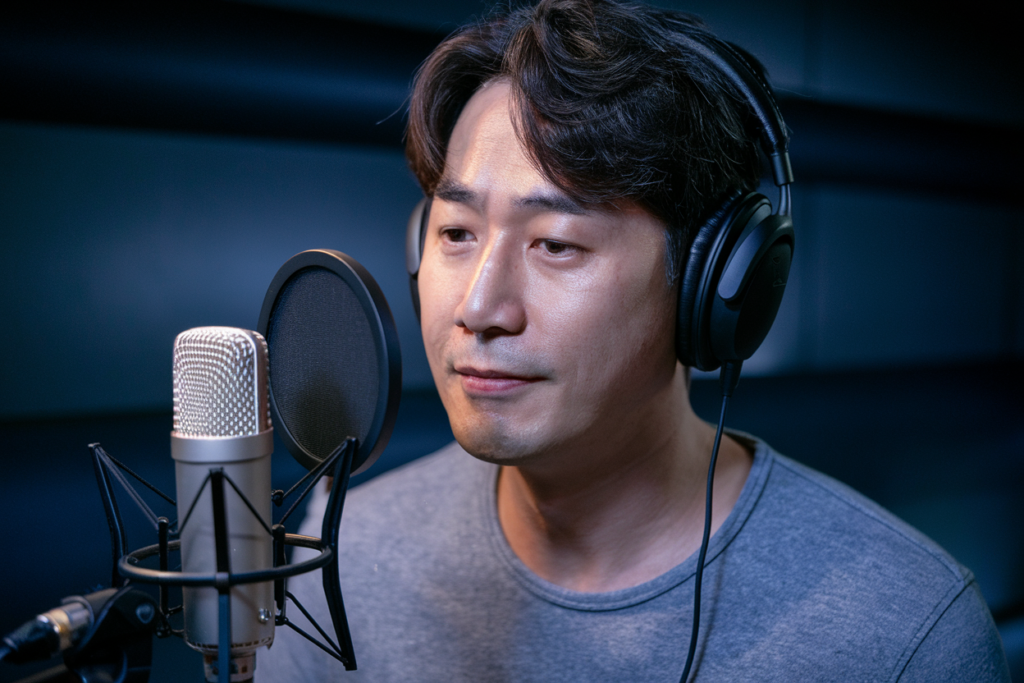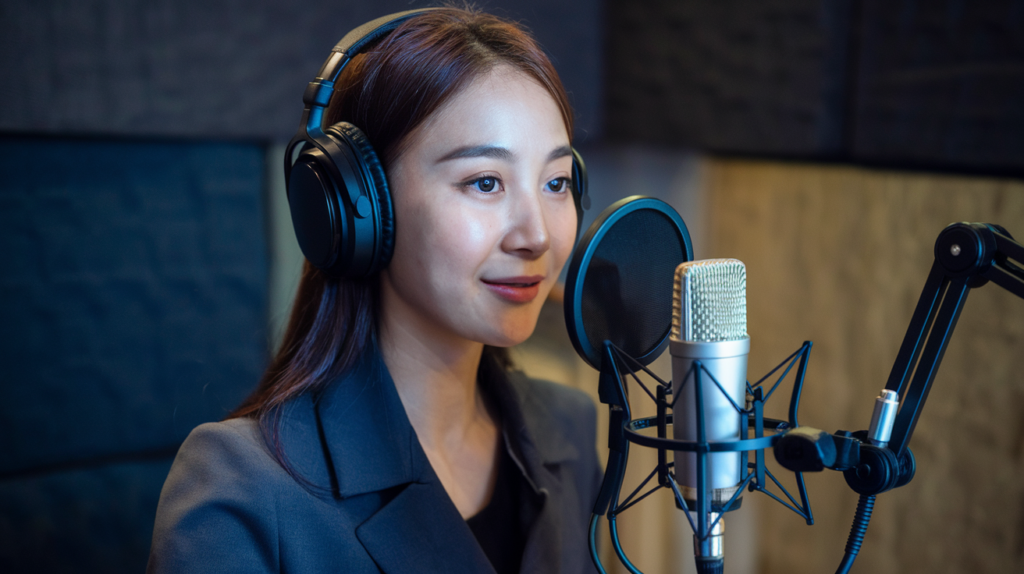Key Takeaways
- Standardization Enhances Communication: Standardizing Korean pronunciation improves clarity and understanding among speakers, crucial for both learners and native speakers.
- Framework for Learners: A consistent approach to pronunciation simplifies the learning process, allowing language learners to focus on vocabulary and grammar without confusion from regional accents.
- Cultural Preservation: Emphasizing standardized sounds helps maintain a unified linguistic heritage while respecting regional dialects, fostering inclusivity within the Korean-speaking community.
- Challenges of Dialectal Diversity: The rich variety of regional dialects presents challenges in standardization, highlighting the need for balance between uniformity and local speech patterns.
- Role of Technology: Advanced tools are aiding in standardizing pronunciation but come with limitations; understanding human speech nuances remains essential for authenticity in voice performances.
- Future Improvement Strategies: Targeted training programs, workshops led by professionals, and interactive technologies can enhance pronunciation mastery and support continuous learning.
Ever wondered why some Korean words sound so different depending on who’s speaking? The standardization of Korean pronunciation plays a crucial role in bridging communication gaps and ensuring clarity. As the language evolves, understanding these standards becomes vital for learners and native speakers alike.
Overview of Korean Pronunciation
Korean pronunciation features distinct sounds and intonations that can vary widely across regions. Understanding these differences is crucial for effective communication, especially for learners. The standardization of pronunciation aims to bridge this gap, promoting clearer interactions among speakers.
In Korean, the language’s phonetic structure includes unique consonants and vowels that may not exist in other languages. For example, the consonants 'ㄱ’ (g/k) and 'ㄷ’ (d/t) can change their sounds based on their position in a word. This variability often confuses non-native speakers.
Standardizing pronunciation helps reduce misunderstandings caused by regional accents or dialects. By adopting a common reference point, both learners and native speakers enhance their clarity and comprehension during conversations.
Moreover, familiarity with standardized pronunciation aids voice actors in delivering accurate performances. Proper articulation ensures that voiceovers resonate with audiences regardless of their background knowledge of the language. Voice artists benefit from mastering these nuances to convey emotions effectively while maintaining authenticity.
Ultimately, as Korean continues to evolve globally, an emphasis on standardized pronunciation becomes essential in fostering clear communication among all speakers.
Importance of Standardization
Standardizing Korean pronunciation significantly improves communication among speakers, enhancing clarity and understanding. As the language evolves, this standardization becomes crucial for both learners and native speakers.
Benefits for Language Learners
For language learners, standardized pronunciation provides a clear framework to follow. It simplifies the learning process by reducing confusion over regional accents or dialects. With a consistent approach, you can focus on mastering vocabulary and grammar rather than navigating varying pronunciations. Additionally, when you practice with standardized sounds, your speaking skills become more easily understood by others, fostering better interactions.
Cultural Significance
Standardized pronunciation also plays an essential role in preserving cultural identity. By emphasizing common sounds and intonations, it helps maintain a unified linguistic heritage while allowing regional variations to coexist. This balance promotes inclusivity within the Korean-speaking community. Furthermore, voice actors benefit from understanding these standards; they can deliver performances that resonate across diverse audiences without being hindered by regional differences in speech patterns. Embracing standardized pronunciation ultimately enriches cultural exchanges and enhances mutual understanding among speakers worldwide.
Current Standardization Practices
Standardization practices in Korean pronunciation focus on establishing clear guidelines that enhance communication. These practices play a vital role in mitigating the confusion caused by regional accents and dialects.
National Language Institute of Korea
The National Language Institute of Korea (NLIK) plays a key role in standardizing Korean pronunciation. NLIK conducts extensive research on phonetics, developing resources that outline proper pronunciation for educators and learners. Their publications provide models for accurate sound reproduction, which is especially beneficial for voice actors who aim to deliver performances with precise articulation. By adhering to these standards, you can ensure clarity and consistency in spoken Korean, making it easier for audiences to understand various nuances.
Regional Variations
Despite efforts at standardization, regional variations still exist within the Korean language. Different areas exhibit unique pronunciations influenced by local dialects, affecting how certain sounds are articulated. For example, certain consonants may become softer or harder depending on their geographic context. Recognizing these variations is essential for voice artists; understanding them enables you to connect more deeply with your audience while maintaining authenticity in your work.
Incorporating both standardized practices and awareness of regional differences allows voice talent to navigate the complexities of Korean pronunciation effectively. This balance not only enhances communication but also enriches cultural exchange among speakers across different regions.
Challenges in Standardization
Standardizing Korean pronunciation presents various challenges that impact communication and the learning process. Regional accents and dialects significantly complicate this endeavor, making it vital to address these issues for clearer interactions.
Dialectal Diversity
Korean is rich with regional diversity, showcasing distinct dialects that reflect cultural uniqueness. Each region has its own phonetic characteristics, which can confuse learners and create barriers in communication. For instance, certain consonants or vowel sounds may be pronounced differently depending on the speaker’s location. This variety underscores the importance of finding a balance between standardization and respecting local speech patterns. Voice actors must navigate these differences to connect authentically with their audiences while adhering to standardized pronunciation guidelines.
Technological Limitations
Technological advancements support efforts in standardizing Korean pronunciation but come with limitations. Current software tools may not accurately capture all regional phonetic variations, leading to oversimplification of complex sounds. Additionally, automated systems often lack context awareness when processing pronunciations across diverse dialects. As voice talent continues to rely on these technologies for training and performance refinement, understanding the nuances of human speech remains crucial for achieving authenticity in delivery. Addressing technological constraints ensures that voice artists produce high-quality performances while remaining true to both standardized practices and regional characteristics.
By recognizing these challenges—dialectal diversity and technological limitations—you can appreciate the complexity involved in standardizing Korean pronunciation effectively within a global context.
Future Directions
The ongoing standardization of Korean pronunciation presents exciting opportunities for improvement and growth. Focused efforts can enhance clarity in communication among speakers, fostering a more unified linguistic community.
Proposed Strategies for Improvement
Implementing targeted training programs can significantly benefit both learners and voice actors. These programs should emphasize standardized phonetics, allowing individuals to practice the nuances of Korean sounds effectively. Additionally, incorporating regular workshops led by experienced voice professionals will provide hands-on experience in mastering pronunciation techniques. Utilizing interactive tools like online platforms or mobile apps can also facilitate consistent practice and reinforce learning outcomes. By establishing feedback mechanisms where voice talent receives constructive critiques on their pronunciation, you encourage continuous development and refinement.
Role of Technology in Standardization
Technology plays a pivotal role in standardizing Korean pronunciation. Advanced software tools now offer real-time analysis of speech patterns, enabling voice artists to identify areas for improvement quickly. Moreover, machine learning algorithms help develop comprehensive databases that analyze regional accents while promoting standardized practices. With the rise of AI-driven language applications, you’ll find innovative solutions that not only assist learners but also support professional voiceover talent in delivering authentic performances across various contexts. Embracing these technological advancements ensures that as the Korean language evolves globally, it remains accessible and clear to all speakers and audiences alike.
Conclusion
Embracing the standardization of Korean pronunciation is essential for fostering clearer communication among speakers and learners. By recognizing the importance of a unified phonetic framework, you can enhance your understanding of the language while navigating its rich dialectal diversity.
As you engage with advanced training programs and technological tools, you’ll find that mastering pronunciation becomes more accessible. This journey not only enriches your linguistic skills but also deepens your appreciation for Korea’s cultural heritage.
Staying informed about ongoing developments in pronunciation standards can empower you to connect authentically within the Korean-speaking community, ensuring that language evolves harmoniously across regions.
Frequently Asked Questions
What is the main focus of the article?
The article focuses on the variability in Korean pronunciation and its effects on communication. It emphasizes the need for standardizing pronunciation to enhance understanding among learners and native speakers, highlighting regional differences that can lead to confusion.
Why is standardization important for language learners?
Standardization simplifies the learning process by providing a clear framework. It enables learners to focus on mastering vocabulary and grammar, reducing misunderstandings caused by regional accents, and enhancing their overall communicative competence.
How does regional variation impact Korean pronunciation?
Regional variations in Korean pronunciation include distinct sounds and intonations that can confuse learners. These differences complicate communication, making it essential for both educators and voice actors to understand local dialects while aiming for standardized practices.
Who is responsible for standardizing Korean pronunciation?
The National Language Institute of Korea (NLIK) plays a crucial role in establishing guidelines for standardized pronunciation. They conduct research on phonetics and provide resources that aid educators and learners in achieving accurate sound reproduction.
What challenges exist in standardizing Korean pronunciation?
Challenges include the rich diversity of regional accents and dialects that complicate communication. Balancing respect for local speech patterns with efforts toward standardization is vital, especially for voice actors who must connect authentically with diverse audiences.
How do technological advancements support standardization efforts?
Technology offers tools like machine learning algorithms that analyze speech patterns in real-time, promoting standardized practices. However, current software may oversimplify complex sounds, highlighting the importance of understanding human speech nuances despite these advancements.
What future directions are proposed for Korean pronunciation standardization?
Future directions include targeted training programs focusing on standardized phonetics tailored for language learners and voice actors. Workshops led by experienced professionals will further support these initiatives alongside advanced technological tools to ensure effective communication as the language evolves globally.







